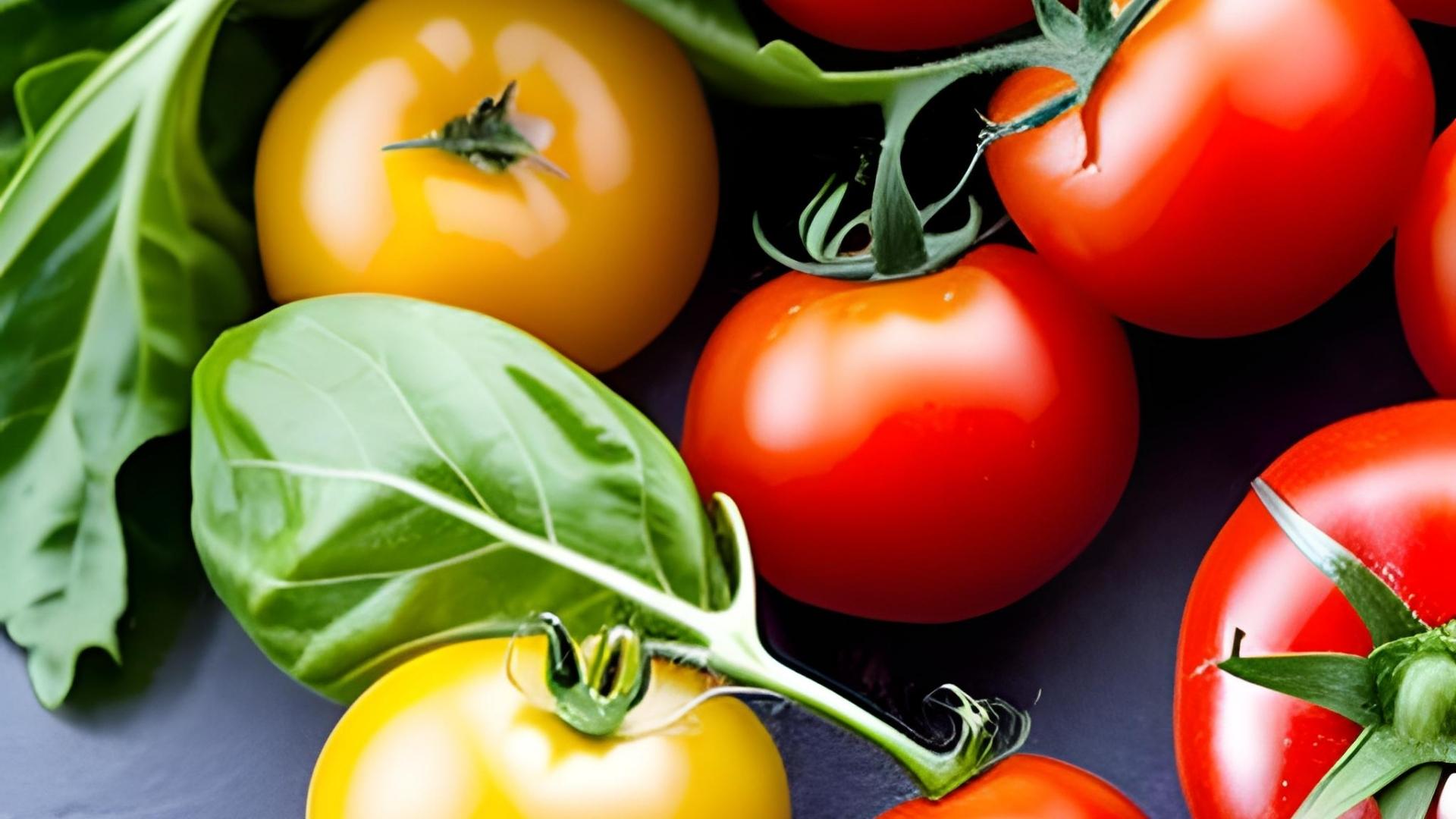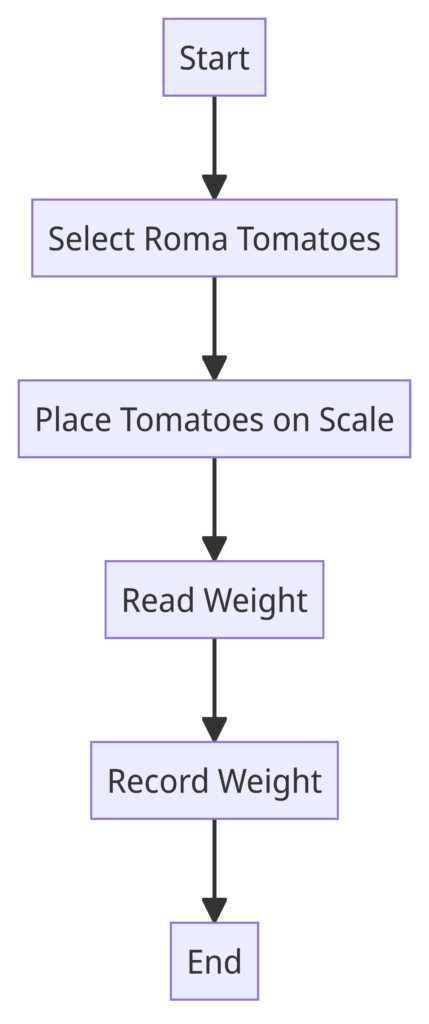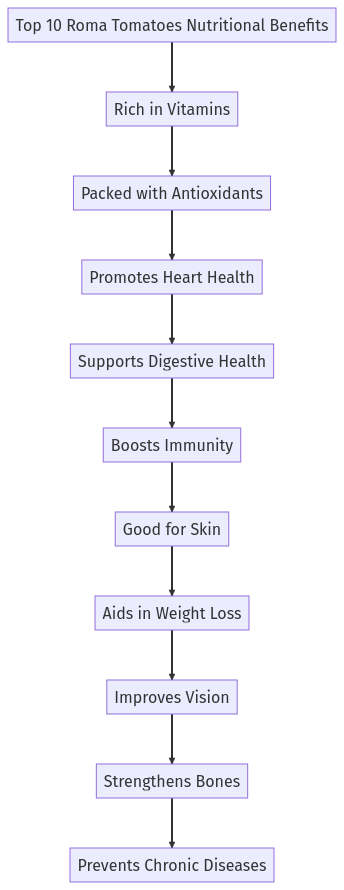Roma tomatoes are a popular variety of tomato known for their meaty texture, low water content, and vibrant flavor. They are commonly used in cooking and can be found in many different recipes, from sauces to salads. One question that often arises when using Roma tomatoes is how many should be used to measure out a cup.
This article aims to answer this question by providing detailed information on measuring Roma tomatoes both by weight and volume. Measuring ingredients accurately is essential for achieving consistent results in cooking and baking. When it comes to Roma tomatoes, there are two main ways to measure them: by weight or by volume.
Depending on the recipe you are following, one method may be more appropriate than the other. In addition, adjusting recipes for ripe or large tomatoes can also impact the amount needed per cup. Understanding these factors can help home cooks achieve precise measurements and create dishes that are both delicious and nutritious.
How Many Roma Tomatoes In A Cup?
Key Takeaways
- Measuring accurately is essential for consistent results in cooking and baking, and measuring by weight is recommended for accurate ingredient portions.
- One medium-sized Roma tomato weighs around 2-3 ounces or 57-85 grams, and one medium-sized Roma tomato yields approximately 1/3 to 1/2 cup of chopped tomatoes.
- Adjusting recipes for ripe or large tomatoes can impact the amount needed per cup, and adapting a recipe for larger or riper tomatoes requires an understanding of moisture content and seed-to-flesh ratio.
- Understanding the unique characteristics of Roma tomatoes, such as their meaty texture, low water content, and vibrant flavor, can maximize their nutrient value and health benefits in dishes.
Understanding Roma Tomatoes
Roma tomatoes, also known as Italian plum tomatoes, are a popular variety of tomato with an elongated shape and meaty texture that make them ideal for sauces and canning.
Unlike other varieties of tomatoes, Roma tomatoes have fewer seeds and less juice, which makes them perfect for cooking. They are typically sweeter than other types of tomatoes, although this can vary depending on the ripeness of the fruit.
In addition to their delicious taste, Roma tomatoes are also packed with numerous health benefits.
They contain high levels of vitamins A and C, as well as potassium and lycopene. These nutrients have been linked to improved cardiovascular health, reduced risk of certain types of cancer, and stronger bones.
With such nutritional benefits coupled with its unique taste profile, it is no surprise that Roma tomatoes are widely used in many cuisines worldwide.
When it comes to measuring roma tomatoes by weight or volume in recipes or meal planning, there are a few things to keep in mind.
Planting Roma Tomatoes (Video)
Measuring Roma Tomatoes by Weight
- When measuring the weight of these specific tomatoes, precision is key in ensuring accurate ingredient portions. Roma tomatoes are a popular choice for many cooking techniques due to their meaty texture and low water content.
- In addition to their culinary versatility, they also offer numerous nutritional benefits such as being rich in vitamins A and C, as well as lycopene which has been linked to reducing the risk of certain cancers.
- To measure Roma tomatoes by weight, it is recommended that a kitchen scale be used. One medium-sized Roma tomato typically weighs around 2-3 ounces or 57-85 grams.
- This can vary slightly depending on factors such as ripeness and moisture content. By accurately weighing Roma tomatoes before incorporating them into dishes, chefs can ensure consistent flavor profiles and nutritional values for each serving.
- Moving onto measuring Roma tomatoes by volume, it is important to note that this method may not always provide precise measurements due to variations in size and shape.
Measuring Roma Tomatoes by Volume
To accurately measure the volume of Roma tomatoes, one can use a measuring spoon or cup to scoop out the flesh and seeds. Roma tomato varieties are known for their meaty texture and low moisture content, making them ideal for cooking tomato sauce recipes.
One medium-sized Roma tomato typically measures around 2-3 inches in length and 1-2 inches in diameter, yielding approximately 1/3 to 1/2 cup of chopped tomatoes.
When using Roma tomatoes in recipes that require precise measurements, it is important to note that the size and ripeness of the tomato can affect its volume. Ripe tomatoes tend to be juicier than unripe ones, so they may yield more liquid when diced or pureed.
Additionally, larger Roma tomatoes may contain more seeds and pulp than smaller ones, which can also impact their overall volume. Adjusting recipes for ripe or large tomatoes is an essential skill for any home cook looking to create delicious meals with this versatile ingredient.
Top 10 Roma Tomatoes Nutritional Benefits
1. High in Vitamin C
Roma tomatoes are a rich source of vitamin C, which is essential for boosting the immune system, promoting collagen production, and protecting against oxidative stress.
2. Rich in Lycopene
These tomatoes are known for their high lycopene content, a powerful antioxidant that has been linked to a reduced risk of certain types of cancer, heart disease, and age-related macular degeneration.
3. Low in Calories
Roma tomatoes are low in calories, making them a great addition to a healthy diet. They can help in weight management and provide a feeling of fullness without adding excess calories.
4. Good Source of Fiber
Fiber is essential for maintaining a healthy digestive system and promoting regular bowel movements. Roma tomatoes contain a good amount of fiber, which aids in digestion and helps prevent constipation.
5. High in Potassium
These tomatoes are a good source of potassium, an essential mineral that plays a vital role in maintaining proper heart and muscle function, as well as regulating blood pressure.
6. Contains Vitamin A
Roma tomatoes are rich in vitamin A, which is crucial for maintaining healthy vision, supporting the immune system, and promoting skin health.
7. Provides Vitamin K
Vitamin K, found in Roma tomatoes, is necessary for proper blood clotting, bone health, and helping to prevent excessive bleeding.
8. Contains B Vitamins
Roma tomatoes contain various B vitamins, including thiamine, riboflavin, niacin, and folate. These vitamins are essential for energy production, promoting a healthy nervous system, and supporting red blood cell production.
9. Rich in Antioxidants
The antioxidants present in Roma tomatoes help neutralize harmful free radicals in the body, reducing the risk of chronic diseases and promoting overall health and well-being.
10. Hydrating Properties
Roma tomatoes have a high water content, which helps keep the body hydrated. Staying adequately hydrated is essential for maintaining healthy skin, regulating body temperature, and supporting overall bodily functions.
Write Roma Tomatoes nutrition values in table
Nutrition Values For Roma Tomatoes (Per 100 Grams)
| Nutrient | Amount |
|---|---|
| Calories | 18 |
| Total Fat | 0.2 g |
| Saturated Fat | 0 g |
| Trans Fat | 0 g |
| Cholesterol | 0 mg |
| Sodium | 5 mg |
| Potassium | 237 mg |
| Total Carbohydrate | 3.9 g |
| Dietary Fiber | 1.2 g |
| Sugars | 2.6 g |
| Protein | 0.9 g |
| Vitamin A | 833 IU |
| Vitamin C | 15.6 mg |
| Calcium | 9 mg |
| Iron | 0.3 mg |
Please note that these values may vary slightly depending on the specific tomato and its ripeness.
Adjusting Recipes for Ripe or Large Tomatoes
- Adapting the recipe for larger or riper tomatoes requires a keen understanding of their moisture content and seed-to-flesh ratio.
- Moisture content is crucial in determining the amount of water that will be released during cooking, which can significantly affect the texture and overall taste of the dish.
- The seed-to-flesh ratio must also be considered as it affects the tomato’s flavor and nutrient value.
- Ripe tomatoes tend to have more seeds than less mature ones, making them ideal for salads or fresh salsas but not suitable for dishes where a thicker consistency is required.
- When substituting tomatoes, it is essential to choose those that are similar in size and ripeness to ensure consistent results.
- If using larger tomatoes than what the recipe calls for, consider adjusting cooking times or cutting them into smaller pieces to allow even cooking throughout.
- Cooking tips such as roasting or grilling may also help reduce excess moisture while intensifying the tomato’s natural flavors.
- Ultimately, whether using ripe or large tomatoes, understanding their unique characteristics will allow you to achieve desired results while maximizing their nutrient value and health benefits in your dishes.
FAQs: How Many Roma Tomatoes In A Cup?
How do I know if a Roma tomato is ripe enough to use in a recipe?
When selecting tomatoes, tomato ripeness is key to achieving optimal flavor and nutrient content. Look for firm, evenly colored fruits with a slight give when gently squeezed. Incorporating ripe Roma tomatoes into recipes can provide a wealth of health benefits.
Can I substitute cherry tomatoes for Roma tomatoes in a recipe?
When experimenting with recipes, cherry tomatoes can be substituted for Roma tomatoes. While they have a different flavor, their texture is comparable. Cherry tomatoes also provide health benefits such as vitamin C, potassium and lycopene.
How long can Roma tomatoes be stored in the fridge before they go bad?
Storing Roma Tomatoes in the fridge can extend their shelf life by up to a week. Check the ripeness before storing, and aim to consume within five days for optimal nutrient value and health benefits.
Are Roma tomatoes genetically modified?
The debate surrounding genetically modified Roma tomatoes continues, with proponents citing increased yield and pest resistance as benefits, while opponents raise concerns about potential health risks and environmental impacts. However, regardless of genetic modification status, Roma tomatoes offer numerous health benefits due to their high nutrient content.
Can I use canned Roma tomatoes instead of fresh in a recipe?
Canned Roma tomatoes can be used as a substitute for fresh in many recipes, but may have lower nutrient value due to processing. Consider adjusting seasonings and cooking times accordingly for optimal taste and texture. Experiment with incorporating canned Roma tomatoes into pasta sauces, stews, and soups.
Conclusion
In conclusion, measuring Roma tomatoes can be done by weight or volume and adjusting recipes for ripe or large tomatoes can ensure the desired outcome. Understanding the characteristics of Roma tomatoes, such as their meaty texture and low water content, can also help in cooking with them.
Furthermore, Roma tomatoes are a nutritious addition to any meal as they contain high levels of vitamin C, potassium, and lycopene which have been linked to numerous health benefits. Incorporating these versatile fruits into one’s diet can not only enhance flavor but also contribute to overall well-being.
Therefore, precise measurement and utilization of Roma tomatoes in cooking can result in both delicious and healthy meals.




